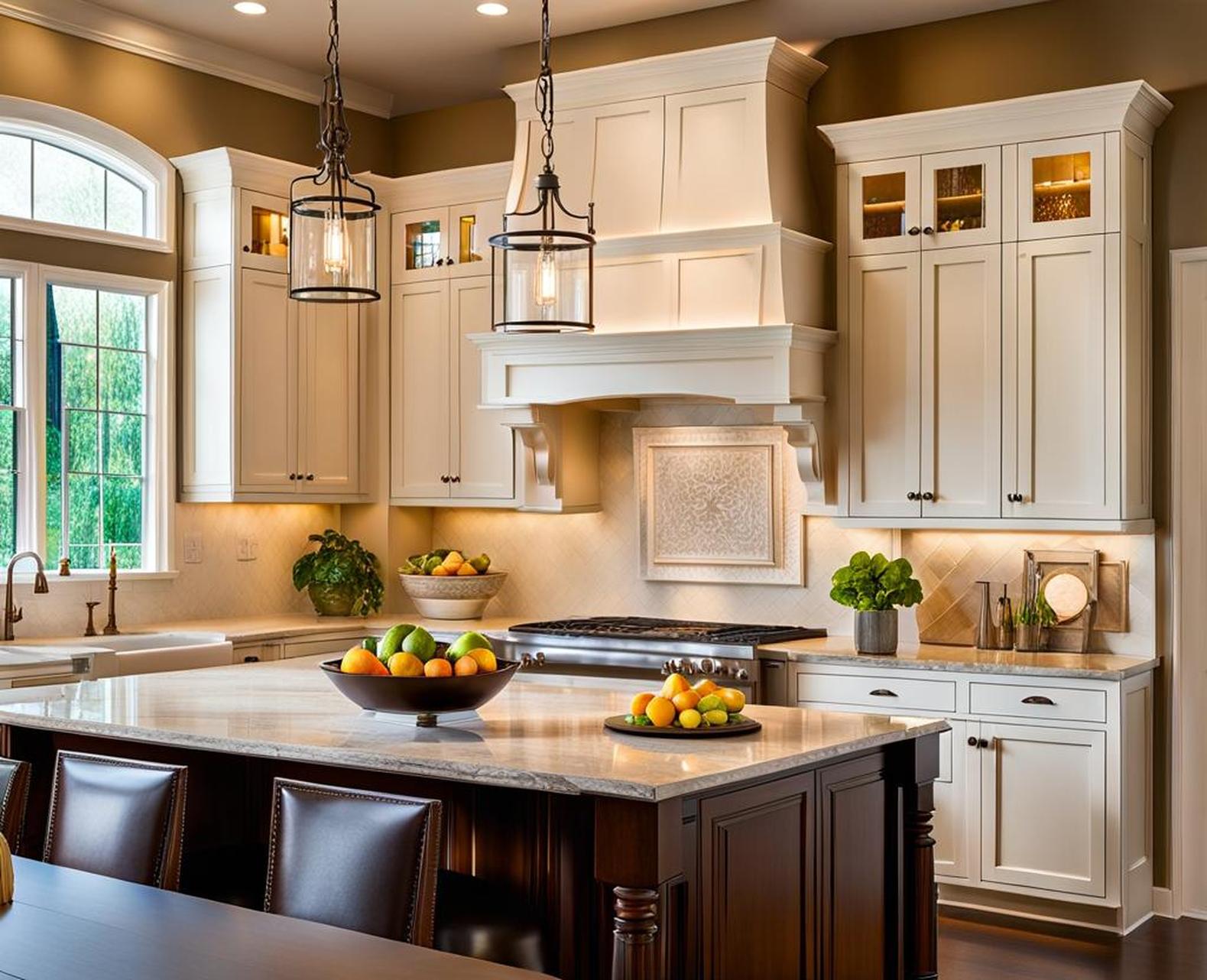A seamlessly connected lighting design between the kitchen and dining areas creates a welcoming ambiance in any home. However, blending two distinct functional spaces can be tricky. Fortunately, with careful planning and strategic fixture selections, you can craft a cohesive lighting scheme that harmoniously bridges these rooms.
Follow these essential tips to unlock the secret of complimentary kitchen and dining lighting for a polished look.

Consider the Overall Design Aesthetic
When beginning a kitchen and dining lighting project, first evaluate the existing decor of both spaces. Take note of the predominant style, whether modern, traditional, transitional or something else entirely. Also make note of the color scheme, materials, textures and any standout decorative elements.
This information will guide your lighting choices. Determine if you want the fixtures to match for a seamless look, or if mixing complementary designs and finishes would better suit the rooms’ aesthetics. There are no strict rules – your personal taste and design goals should steer the ship.
Look for Complementary Styles
Blending fixtures of varied styles is one approach to prevent a cookie-cutter look between kitchen and dining areas. The key is finding light fixtures that work in harmony together despite their differences. For example, installing a sleek, modern pendant light over the kitchen island can complement a crystal chandelier with old-world charm hanging above the dining table.
When mixing styles, repeat some unifying details like finish, shape, or material across the different fixtures. Or choose complementary designs like industrial and farmhouse that share rustic and vintage elements. The separate personalities will feel connected and custom.
Choose the Right Finish
If maintaining a consistent finish between kitchen and dining lighting is preferable, choosing oil-rubbed bronze, brushed nickel, polished brass or another finish is an easy route to visual cohesion. You can select finishes that tie into cabinet hardware and plumbing fixtures for a tailored look.
Varying finishes can work, too – just opt for complementary tones like pairing chrome with nickel or black fixtures with iron. The key is ensuring the finishes work in harmony. An overall continuous finish gives a refined, upscale appearance.
Use Dimmers to Create Cohesion
Installing dimmer switches for lighting in both the kitchen and dining areas allows modifying the ambiance to suit any moment or need. For kitchen tasks like food prep, lights can blaze brightly. Then dimmers enable softening the lighting to a warmer glow for dining and entertaining.
Slowly increasing light from dimmers as dusk falls provides a graceful transition to evening in the dining room. Dimmers give you lighting control to craft different scenes and experiences while maintaining harmony.
Prioritize Functionality First
When shopping lighting, functionality takes precedence over aesthetics for kitchen and dining needs. The kitchen requires ample task lighting for food preparation areas, sinks, and safe navigation. Meanwhile, flexible ambient lighting creates a relaxing dining atmosphere.
Layered lighting affords both: Pot lights recess into the kitchen ceiling for overall illumination, while pendant lights hang over the dining table for style. Under cabinet lighting provides focused kitchen work light. Meet functional needs, then align fixtures with your aesthetic vision.
Focal Points Anchor the Spaces
Strategically anchoring the kitchen and dining areas with striking pendant or chandelier fixtures establishes each space while drawing a visual through-line between them. A linear row of sizable pendant lights suspended over a kitchen island commands attention and illuminates gathering areas.
In the dining room, an elegant crystal chandelier instantly becomes a focal point. Supplement these statement-making fixtures with accent lighting like wall sconces and strategically placed recessed lights to finish the rooms.
Play with Height and Positioning
Hanging pendant lights at staggered heights or in asymmetry adds dynamism while also serving function. Position bar-height pendants lower to directly illuminate counter prep zones. Raise other pendants higher over the sink or range hoods. Control placement based on ceiling height and lighting needs.
In the dining area, follow the standard measurement guide of 30-34 inches between the bottom of the chandelier and tabletop. Adjust to your room proportions and fixture size for ideal illumination. Though at different heights, tailored placement connects the spaces.
Don’t Forget the Details
While kitchen islands and dining room chandeliers pull focus, additional accent, task and detail lighting round out the rooms’ lighting schemes. Under and inside cabinet lighting illuminates kitchen work zones. Wall sconces flanking a sideboard or mirror generate dining ambiance and eliminate shadows.
Consider using LED strip lighting to highlight architectural details. Matching fixtures in adjacent transitional spaces further bridge the overall lighting design between rooms. Well-planned details reinforce the cohesive style.
Enhance the Experience with Lighting Controls
Today’s vast range of lighting controls takes cohesive kitchen and dining lighting to the next level of enjoyment, function and ease. Smart light switches, remote controls, wall dimmers, and lighting apps afford unmatched command over your lighting.
scheduled occupancy/vacancy sensing efficiently automates lighting needs for bustling kitchens and dining rooms. Controls allow easily modifying lighting scenes to accommodate shifting needs between cooking, socializing, dining, and cleaning through the day and evening.
A welcoming flow in your home is created by unifying your kitchen and dining lighting. Consider the overall aesthetic, balance functional needs, play with complementary designs, finishes and placement, and enhance with controls. Soon you’ll unlock the secret of an effortlessly harmonious lighting scheme.
